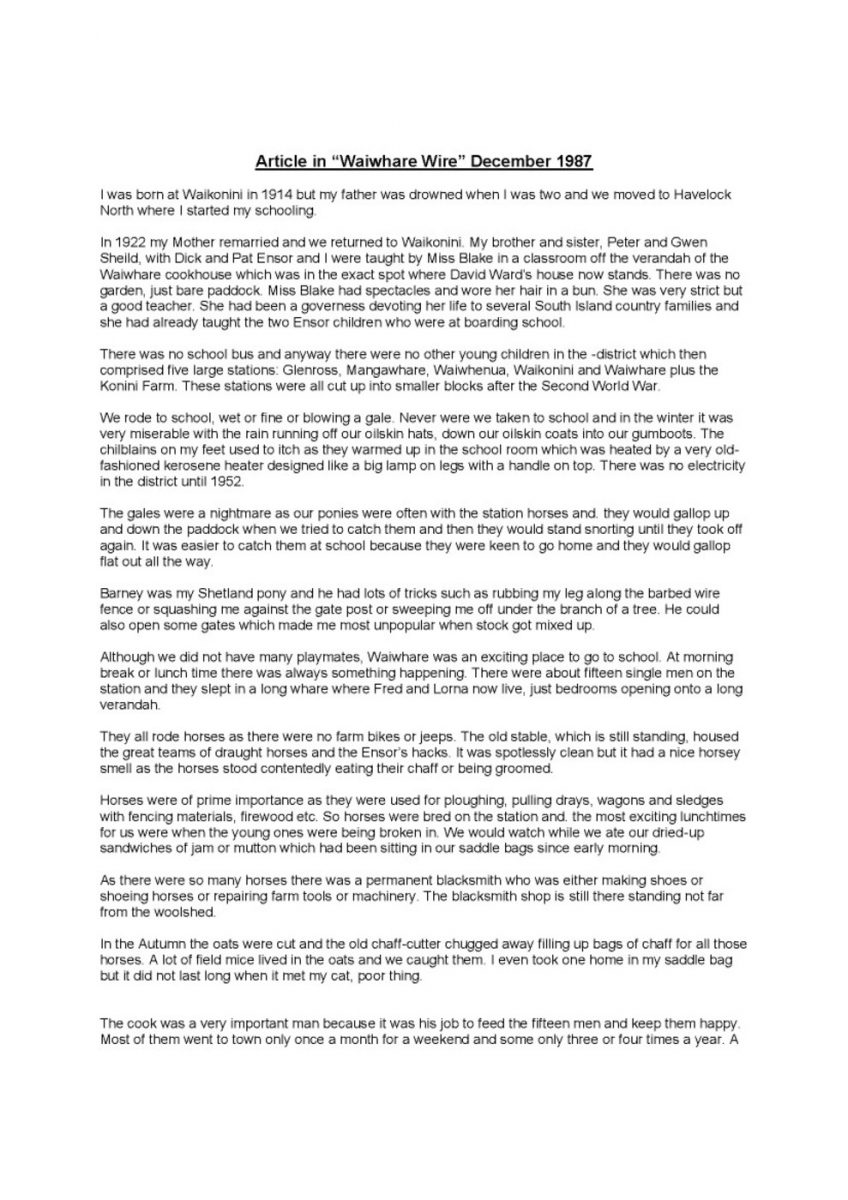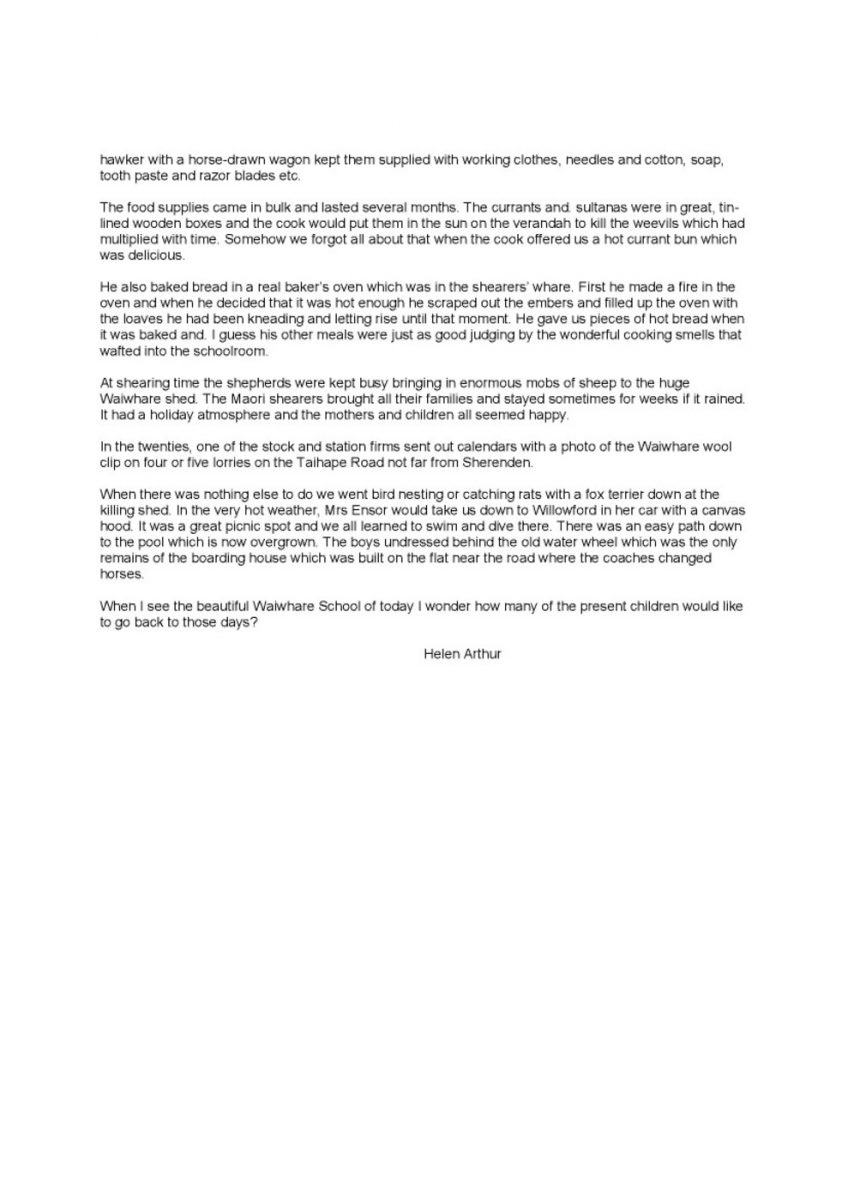Article in “Waiwhare Wire” December 1987
I was born at Waikonini in 1914 but my father was drowned when I was two and we moved to Havelock North where I started my schooling.
In 1922 my Mother remarried and we returned to Waikonini. My brother and sister, Peter and Gwen Sheild, with Dick and Pat Ensor and I were taught by Miss Blake in a classroom off the verandah of the Waiwhare cookhouse which was in the exact spot where David Ward’s house now stands. There was no garden, just bare paddock. Miss Blake had spectacles and wore her hair in a bun. She was very strict but a good teacher. She had been a governess devoting her life to several South Island country families and she had already taught the two Ensor children who were at boarding school.
There was no school bus and anyway there were no other young children in the district which then comprised five large stations: Glenross, Mangawhare, Waiwhenua, Waikonini and Waiwhare plus the Konini Farm. These stations were all cut up into smaller blocks after the Second World War.
We rode to school, wet or fine or blowing a gale. Never were we taken to school and in the winter it was very miserable with the rain running off our oilskin hats, down our oilskin coats into our gumboots. The chilblains on my feet used to itch as they warmed up in the school room which was heated by a very old-fashioned kerosene heater designed like a big lamp on legs with a handle on top. There was no electricity in the district until 1952.
The gales were a nightmare as our ponies were often with the station horses and. they would gallop up and down the paddock when we tried to catch them and then they would stand snorting until they took off again. It was easier to catch them at school because they were keen to go home and they would gallop flat out all the way.
Barney was my Shetland pony and he had lots of tricks such as rubbing my leg along the barbed wire fence or squashing me against the gate post or sweeping me off under the branch of a tree. He could also open some gates which made me most unpopular when stock got mixed up.
Although we did not have many playmates, Waiwhare was an exciting place to go to school. At morning break or lunch time there was always something happening. There were about fifteen single men on the station and they slept in a long whare where Fred and Lorna now live, just bedrooms opening onto a long verandah.
They all rode horses as there were no farm bikes or jeeps. The old stable, which is still standing, housed the great teams of draught horses and the Ensor’s hacks. It was spotlessly clean but it had a nice horsey smell as the horses stood contentedly eating their chaff or being groomed.
Horses were of prime importance as they were used for ploughing, pulling drays, wagons and sledges with fencing materials, firewood etc. So horses were bred on the station and. the most exciting lunchtimes for us were when the young ones were being broken in. We would watch while we ate our dried-up sandwiches of jam or mutton which had been sitting in our saddle bags since early morning.
As there were so many horses there was a permanent blacksmith who was either making shoes or shoeing horses or repairing farm tools or machinery. The blacksmith shop is still there standing not far from the woolshed.
In the Autumn the oats were cut and the old chaff-cutter chugged away filling up bags of chaff for all those horses. A lot of field mice lived in the oats and we caught them. I even took one home in my saddle bag but it did not last long when it met my cat, poor thing.
The cook was a very important man because it was his job to feed the fifteen men and keep them happy. Most of them went to town only once a month for a weekend and some only three or four times a year. A













Do you know something about this record?
Please note we cannot verify the accuracy of any information posted by the community.